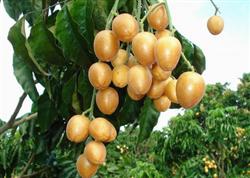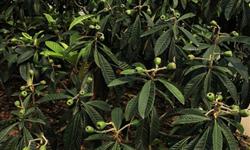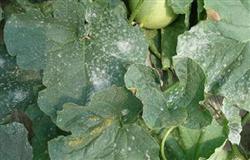How to plant and manage the yellow bark tree?

How to plant and manage the yellow bark tree? What should I pay attention to when planting wampee trees? Also ask experienced netizens to help introduce that wampee is one of the fruits in southern China, which can be salted or sweetened into cold fruit in addition to fresh food. It has the effect of relieving food, relieving qi and eliminating heat. Roots, leaves and kernels (that is, seeds) have the effects of invigorating qi, relieving stagnation, relieving surface, dissipating heat, relieving pain and resolving phlegm. It can be said that the whole body of wampee is a treasure, so the farming network has sorted out the planting methods and management methods of the wampee tree, which are listed in detail below for netizens' reference. Planting step 1, the selection of yellow skin varieties: at present, the main cultivated varieties are chicken heart yellow skin, selection of big chicken heart yellow skin and so on. Step 2. Environmental requirements of wampee trees: 1. Temperature requirements: the area where the annual average temperature is more than 20 ℃ and the average temperature in January is more than 12 ℃ is the most suitable. Adult trees will suffer frost injury when the temperature is below 0 ℃, and the cold tolerance of young trees is poor. 2. Water requirements: wampee is an annual evergreen fruit tree, which needs a humid environment and sufficient water. It grows well in areas with more than 1500 mm of annual rainfall and uniform distribution. Too much water or too concentrated rainfall is disadvantageous to wampee growth, development, flowering and fruiting. 3. Light requirements: sufficient light, canopy branches and leaves can absorb scattered light for photosynthesis, expand photosynthetic area, enhance tree nutrient accumulation, expand fruit area, improve fruit quality and yield; lack of light affects plant photosynthesis and nutrient accumulation, which is disadvantageous to plant growth and development. 4. soil requirements: yellow bark does not have high requirements for soil, clay loam and sandy loam can be planted, but different soils will have different effects on plant life and yield. When planted on sandy loam with good drainage, fertile soil and deep soil layer, the tree is strong, long life, high and stable yield. If the yellow bark is planted on the clayey and heavy soil with thin soil, poor drainage and irrigation and stagnant water, the life span of the wampee tree is short and the yield is low. Planting step 3, the planting of wampee tree: 1, the planting time of wampee tree: generally from March to May, when there are more Rain Water, the temperature rises, it is easy to take root, and the plant survival rate is high. When the nutrition bag seedlings are transplanted, the root system is less affected, and the garden with irrigation conditions can be planted in spring, summer, autumn and winter. 2. The planting density of wampee trees is 50-80 trees per mu, and the row spacing can be 3 m × 4 m or 2.5 m × 3.5 m. When close planting is planned, about 110 plants will be planted per mu, and the row spacing can be 2 meters × 3 meters. Dig holes according to the specification of 1 meter long, 1 meter wide and 0.8 meters deep. Each hole should be buried with 50 kg of green manure, 50 kg of soil fertilizer, 500 grams of lime and 500 grams of phosphate fertilizer, and the backfilled topsoil should be about 20 cm higher than the ground. 3. Precautions for planting wampee trees: during planting, the roots of wampee seedlings should avoid contact with fertilizer, the seedlings should remain upright, the roots should stretch naturally around, and the depth should be fine soil to cover the seedlings to the root neck. Management of wampee trees-management of young wampee trees: 1. Fertilization and watering: fertilization methods for young trees: the root system of young trees is not yet developed, the distribution is shallow, and the absorption capacity is weak. Fertilization should grasp the principle of frequent and thin application, mainly nitrogen fertilizer, combined application of phosphate fertilizer, potash fertilizer, calcium fertilizer, magnesium fertilizer, foliar micro-fertilizer and so on. Fertilization can be started one month after the planting survived, and then fertilized before each shoot sprouting and after turning green. In addition, organic fertilizer should be applied deeply every winter. The watering method of young trees: the growth of young trees is exuberant, the root system is shallow and few, and is easily affected by the change of soil moisture. It is necessary to strengthen soil moisture management, irrigation during drought and drainage during waterlogging, so as to keep the soil moist so as to facilitate the normal growth of plants. Second, the pruning of young trees: after the wampee seedlings are planted and survived, they are coring or truncated at the height of 40-50 cm of the trunk to promote bud germination under the section. After the main branch is ripe, coring or cutting is carried out at 15-20 cm to promote the bud germination under the shearing mouth, and then 2-3 robust and reasonably distributed branches are selected on each main branch to cultivate the secondary main branch. the third and fourth branches were cultured by the same method. 4. Interplanting of wampee trees: in general, young wampee orchards can use interrow planting of legume crops, such as peanuts, soybeans or vegetables, without affecting the growth of wampee, so as to protect the soil from moisture and heat. Management of wampee trees-management of fruiting wampee trees: 1. Fertilization of fruiting wampee trees: 1. After fruit harvest, the amount of fertilizer applied is relatively large, and the specific amount of fertilizer application depends on the age, fruit amount and soil conditions of the fruiting trees. Water and fertilizer is 10 times of mature bran water, 15 kg per plant, drenched in shallow trenches near the dripping line around the crown or directly on the tree plate. If applying dry fertilizer, choose ternary compound fertilizer (the ratio of nitrogen, phosphorus and potassium is 15:15:15) to apply 200,300g per plant or 200g of urea. 2. After the autumn shoots of fruit trees germinate, the aim is to promote the ripening of autumn shoots and the secondary autumn shoots in time, and to cultivate fruiting mother branches. Plant application of ternary compound fertilizer (the ratio of nitrogen, phosphorus and potassium is 15:15:15) 200300g. 3. Before and after Greater Cold, the aim was to promote flower bud differentiation and facilitate the development of flower organs and fruiting branches. Plant application of livestock manure 10 kg, bran cake 500 g, mushroom residue 10 kg, forage 15 kg, lime 250 g, according to a layer of fertilizer and a layer of soil buried in the hole, and then backfill the topsoil. 4. After the full flowering stage, the aim is to replenish the nutrients consumed by flowering in time, promote flowers and fruits, and keep the leaves green. 150-200g compound fertilizer was applied to the plant. 5. In the period of fruit expansion, that is, after physiological fruit drop. The aim is to promote fruit expansion, normal fruit development, increase yield, plant application of compound fertilizer 150-200g. 2. Pruning of wampee trees in winter: 1. Winter pruning: combined with clearing the garden in winter, it is mainly to cut off dead branches, disease and insect branches, shade branches and weak branches, so as to ensure the ventilation and light of the tree, reduce diseases and insect pests and unnecessary nutrition consumption in the following year, so as to facilitate photosynthesis, promote autumn shoot growth and flower bud differentiation, and lay the foundation for high yield in the following year. 2. Pruning in growing season: combine fruit picking or fruit picking to retract or cut fruit mother branches in time, promote autumn shoots, and cultivate robust fruit mother branches. 3. Cultivate robust fruiting mother branches: apply fertilizer before and after fruit, catch up and replenish fertilizer in time during the growth and development of autumn shoots, so as to promote the germination and sturdiness of fruiting mother branches. During the germination, growth and development of autumn shoots, the inspection of the occurrence of insect pests was strengthened. it was found that the insect pests were sprayed immediately to reduce the population density and reduce the occurrence of insect pests. Third, wampee tree flower thinning, fruit thinning, fruit protection methods: 1, wampee flower thinning method: yellow flower spike, many florets, more than a thousand per panicle, long flowering period, especially young trees, often the florescence of the same spike can be as long as 15-20 days, the fruit setting rate is 3-6%, and the higher one is about 10%. Due to the long flowering period, it not only causes fruit drop, but also leads to different sizes and ripening periods of fruits in the same ear. In order to reduce the nutrient consumption of the tree and promote the flowering and maturity of the same panicle to be consistent, the method of properly thinning flowers or truncating the panicle can be adopted. That is, from flowering to blooming, the top spike should be cut off about 1 / 3 of the total amount. If the flower spike has leaflets, the leaflets should be removed at the same time. 2. The method of fruit thinning with yellow skin: thinning fruit with yellow skin can increase the fruit and make the fruit size and ripening period consistent. Fruit thinning can be carried out after physiological fruit drop, generally removing deformed fruit, disease and insect fruit, small fruit, and then according to plant growth and nutrition level, hanging fruit quantity, thinning dense fruit. 3. The method of protecting fruit from wampee: during the period from expansion to maturity of wampee fruit, attention should be paid to preventing insect, disease and cracking. During the period of fruit development, water is drenched and sprayed during drought and drained during waterlogging to keep the environment and soil moist. Pay attention to the inspection and control of diseases and insect pests that harm the fruit. It is not suitable to apply pesticides within one month before fruit picking. If there are diseases and insect pests, they should be removed in time to reduce the spread of diseases and insect pests. Wampee tree disease and insect pest control methods: 1. Wampee anthracnose: wampee anthracnose is a common disease in production, which is susceptible to leaf spots, leaf rot, bald branches, flower rot and fruit rot. If wampee and other crops are interplanted and the planting density is high, and the drainage is not perfect, the yield and quality of wampee will be affected. Prevention and control methods: scientific use of fertilizer and water, enhance the tree potential, pay attention to timely drainage after rain, improve plant disease resistance and prevent bacterial infection. To achieve rural cleanliness, timely cut off diseased branches, diseased leaves, deal with rotten fruit, reduce the source of overwintering disease. Timely application, protection of new shoots, young fruits, early emergence of new shoots and Xiehua fruit setting period should be applied in time. The medicament can choose 80-1000 times liquid of 70% thiophanate wettable powder, or 50% carbendazim wettable powder 500-1000 times liquid, or 75% chlorothalonil 700-1000 times liquid, or 50% carbendazim wettable powder 500 times. 2. Soot disease of yellow bark: it mainly harms leaves, as well as shoots and fruits, which hinders photosynthesis, weakens tree potential and affects yield and fruit quality. Prevention and control methods: do a good job in the prevention and control of aphids and shellfish, reduce the source of insects, strengthen inspection, and apply pesticides in time at the initial stage of the disease. The medicine can use 300 times of sulfur gel suspension, or 500 times of 40% methomyl, or 600 times of 30% copper oxychloride suspension. 3. White moth wax cicada: cut off insect branches at the right time and burn them centrally. To master the initial hatching period of nymphs, chemical control should be carried out before the concentrated harm is dispersed. The medicament can choose 80% dichlorvos 800 times liquid, or 10% dichlorvos 2000 times liquid, or 40% dimethoate 1000 times liquid. Management methods of yellow bark trees after flowering management methods of young wampee trees
- Prev

How to make loquat trees bear more fruit?
How to make loquat trees bear more fruit? What are the ways to achieve this? Also ask experienced netizens to help introduce planting loquat trees to obtain high yield and high quality loquat, mainly to improve the fruit setting rate and fruit quality of loquat, so the planting network sorted out the fruit thinning and fruit protection methods of loquat tree, which are listed in detail below.
- Next

How to control powdery mildew in cantaloupe planting?
How to control powdery mildew in cantaloupe planting? What harm does powdery mildew do to cantaloupe? Also ask experienced netizens to help introduce powdery mildew as the main disease in Hami melon cultivation, which is widely distributed and common, and occurs in protected and open fields, which seriously affects the yield and quality of Hami melon. So the farming network sorted out Hami.
Related
- Moge, come on! The staff of the peasant association in the producing area of cantaloupe were frightened when the crowd gathered.
- Causes and Solutions of low Fruit setting rate of Apple
- Symptoms and control measures of passion fruit virus disease
- Fruit growing lesson: how do apple orchards keep high yields?
- Can you build orchards in the mountains? What are the pros and cons?
- How to manage the coloring period of Crisson grape?
- This paper introduces the processing technology of two kinds of fig products.
- How much is a month for retired teachers in rural areas by 2020?
- How can strawberry planting increase sugar content? We should pay attention to management in many aspects.
- What are the cultivation techniques on how to improve the yield of golden fruit?

